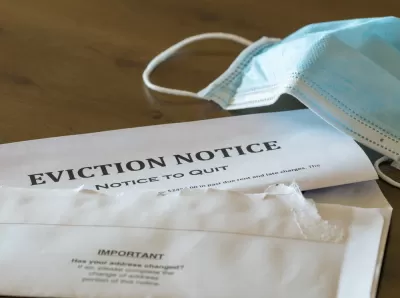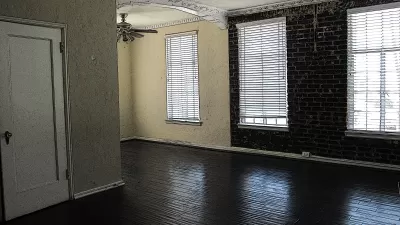With the eviction moratorium set to expire soon, states and localities must do more to streamline the application process and get federal assistance dollars into the hands of renters facing eviction.

The Urban Institute's Mary K. Cunningham, Kathryn Reynolds, and Christopher Davis assess the rate of distribution for federal rental assistance dollars, providing some recommendations for states and cities to streamline their processes and get rental assistance to those who need it most. "Assuming the Treasury maintains its May 2021 distribution rate (5,153 households per day), it would take 627 days, or about 21 months, to reach all 3.2 million renters who believe they will be evicted."
"The eviction moratorium expires in 17 days, and although some jurisdictions are ensuring that no one is evicted without first exhausting emergency relief options, most jurisdictions don’t have these stopgaps. Even the ones that do have these stopgaps still need to figure out the logistics of getting relief funds to renters." Additionally, "[m]any state and local jurisdictions didn’t have rental assistance programs before the pandemic, often because there wasn’t robust federal funding to meet the need."
The authors write that despite encouragement from the Treasury to simplify the application process, "most states and localities are not allowing for self-attestation for income, housing instability, and lease or proof of tenancy." They offer three proposed methods for streamlining the process:
- "Knock on doors to reach out to those eligible."
- "Allow for self-attestation for all eligibility requirements," as federal programs do.
- "Provide rental assistance in the courts through eviction diversion programs," which should include "case management and housing navigation services which can also be funded using emergency relief dollars."
FULL STORY: Three Ways States and Localities Can Get Rental Assistance to People Faster

Alabama: Trump Terminates Settlements for Black Communities Harmed By Raw Sewage
Trump deemed the landmark civil rights agreement “illegal DEI and environmental justice policy.”

Planetizen Federal Action Tracker
A weekly monitor of how Trump’s orders and actions are impacting planners and planning in America.

The 120 Year Old Tiny Home Villages That Sheltered San Francisco’s Earthquake Refugees
More than a century ago, San Francisco mobilized to house thousands of residents displaced by the 1906 earthquake. Could their strategy offer a model for the present?

Ken Jennings Launches Transit Web Series
The Jeopardy champ wants you to ride public transit.

BLM To Rescind Public Lands Rule
The change will downgrade conservation, once again putting federal land at risk for mining and other extractive uses.

Indy Neighborhood Group Builds Temporary Multi-Use Path
Community members, aided in part by funding from the city, repurposed a vehicle lane to create a protected bike and pedestrian path for the summer season.
Urban Design for Planners 1: Software Tools
This six-course series explores essential urban design concepts using open source software and equips planners with the tools they need to participate fully in the urban design process.
Planning for Universal Design
Learn the tools for implementing Universal Design in planning regulations.
Clanton & Associates, Inc.
Jessamine County Fiscal Court
Institute for Housing and Urban Development Studies (IHS)
City of Grandview
Harvard GSD Executive Education
Toledo-Lucas County Plan Commissions
Salt Lake City
NYU Wagner Graduate School of Public Service





























